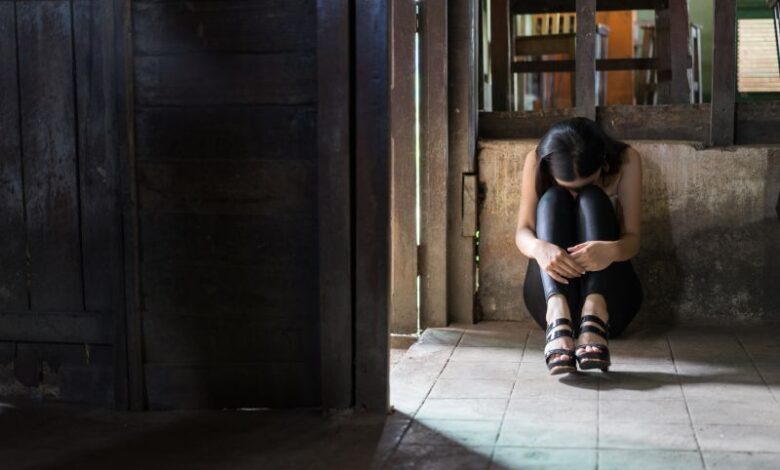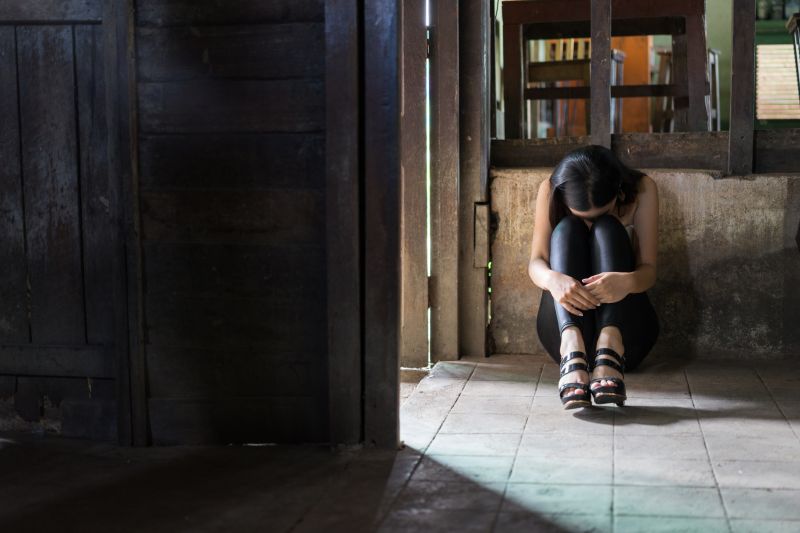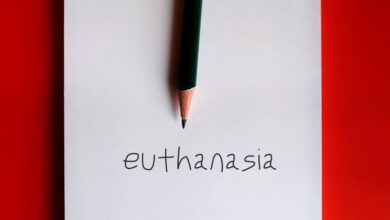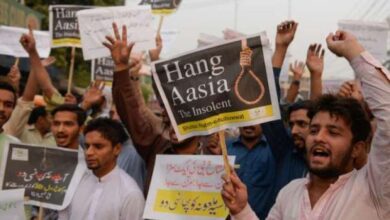Human trafficking by the numbers: New reports estimate millions of daily victims

 Photo illustration. / Shutterstock
Photo illustration. / Shutterstock Denver, Colo., Jul 20, 2023 / 15:50 pm (CNA).
On any given day millions of people worldwide are victims of trafficking, forced labor, and sexual exploitation.
Recent reports from the U.S. State Department, anti-human trafficking groups, and other global leaders focus on the serious problems of trafficking, forced labor, and modern-day slavery.
The breakdown
In 2021, 27.6 million people worldwide were subjected to forced labor.
That figure comes from a September 2022 report, “Forced Labor and Forced Marriage,” authored by the International Labor Organization, the U.N. International Organization for Migration, and the Australia-based human rights advocacy group the Walk Free Foundation.
According to the joint report, 17.3 million people were victims of forced labor exploitation, 6.3 million were victims of forced commercial sexual exploitation, and 3.9 million people were victims of state-imposed forced labor on any given day in the year 2021. These figures include about 3.3 million children subject to forced labor. Half of these children are sexually exploited for commercial gain.
The Walk Free Foundation on June 16 published its separate analysis, including rankings of individual countries, in the latest edition of its Global Slavery Index. It estimates that 28 million people were subject to forced labor last year, while another 22 million were found to be in forced marriages. Forced marriages are particularly prevalent in Arab states and are generally imposed by family members. Women, migrants, refugees, and other people in crisis are disproportionately affected.
The Global Slavery Index estimates that 50 million people — 1 in 150 — were living in modern slavery at some point in 2021, an increase from 40 million people in 2016.
Notably, there is debate about how to define victims of trafficking and slavery: The U.S. State Department webpage about human trafficking notes that “modern slavery” is not defined in international or U.S. law. Some instances of forced marriage may meet U.S. or international definitions of human trafficking, but not all cases do. It recommends using only the figures for forced labor.
Despite different views, Grace Forrest, the founding director of Walk Free, emphasized the need to combat trafficking and slavery.
“Modern slavery permeates every aspect of our society,” Forrest said in a June 16 statement on the release of the Global Slavery Index. “It is woven through our clothes, lights up our electronics, and seasons our food. At its core, modern slavery is a manifestation of extreme inequality. It is a mirror held to power, reflecting who in any given society has it and who does not. Nowhere is this paradox more present than in our global economy through transnational supply chains.”
The Global Slavery Index bases its estimates on thousands of interviews with survivors collected in representative household surveys across 75 countries.
In its reckoning, “modern slavery” refers to exploitative situations in which a person cannot refuse or leave due to threats, violence, coercion, or deception. It includes forced labor, prison labor, debt bondage, forced marriage, forced commercial sexual exploitation, and the sale and exploitation of children. People who flee conflict, natural disasters, political repression, or migrate to seek work are particularly vulnerable.
Trafficking and exploitation: how countries rank
The Global Slavery Index, which includes forced marriage, ranks North Korea the worst: More than 1 in 10 people are estimated to be in conditions of modern slavery. In Eritrea, about 9 in 100 people are estimated to be modern slaves. About 3 in 100 people in Mauritania are slaves, with fewer proportionally in Saudi Arabia, Turkey, Tajikistan, and the United Arab Emirates. About 1 in 100 people in Russia, Afghanistan, and Kuwait are in modern slavery.
Over half of all people living in modern slavery are in G20 countries, and these countries help fuel enslavement by importing products and supplies reliant on forced labor. Among G20 countries, India has 11 million people in modern slavery, China has 5.8 million people, Russia has 1.9 million people, Indonesia has 1.8 million, Turkey has 1.3 million, and the U.S. has 1.1 million people, according to the report.
Human trafficking and forced labor are closer to home than many Americans think. The Global Slavery Index warns that migrant workers in the agricultural sector in the U.S. and Canada are vulnerable to forced labor. The index cites the use of forced prison labor in American public and private prisons. Supply chains to the U.S. market are also at risk of using forced labor, the report says. Some U.S. visitors to the Caribbean help fuel “sex tourism” reliant upon the sexual exploitation and trafficking of minors.
The Global Slavery Index ranked countries’ governments on various factors related to modern slavery: how countries identify and support survivors; how criminal justice systems work to prevent modern slavery; governments’ anti-slavery coordination and accountability at the national and regional level; how countries address risk factors, social attitudes, and other institutions that enable modern slavery; and the extent to which government and business eliminate forced labor from the production of goods and services.
According to the index, the U.K., Australia, and the Netherlands have the strongest government responses to modern slavery, followed by Portugal and the United States. Government responses to modern slavery are weakest in Iran, Eritrea, North Korea, Somalia, and Libya.
The U.S. government’s response
The U.S. State Department in June released its latest Trafficking in Persons Report, which assesses countries around the world based on how their governments work to prevent and respond to trafficking. It ranks governments into three tiers according to whether they meet the “minimum standards” of the U.S. Trafficking Victims Protection Act. According to the report, the U.S. recognizes forced labor and sex trafficking as “two primary forms of trafficking in persons.”
“Every year millions of people are exploited within and across borders,” U.S. Secretary of State Antony Blinken said in a message introducing the report. “They are forced to work in factories for little or no pay; harvest crops; toil in terrible conditions in mines, construction sites, and fishing boats; or work in private homes. Many victims are exploited for commercial sex, adults and children alike.”
To maintain a Tier 1 ranking, governments must demonstrate “appreciable progress” against human trafficking each year. Tier 2 countries do not meet these minimum standards but are still making “significant efforts” to attain compliance. A Tier 2 watch list includes Tier 2 countries that are not proportionately responding to a significant number of trafficking victims, or a significant increase in the number of victims.
Tier 3 countries do not meet the U.S. legislation’s minimum standards and “are not making significant efforts to do so.” These Tier 3 countries may face some funding restrictions on foreign assistance at the determination of the U.S. president.
There are 24 governments ranked at Tier 3: Afghanistan, Algeria, Belarus, Burma, Cambodia, Chad, China, Cuba, Curacao, Djibouti, Equatorial Guinea, Eritrea, Guinea-Bissau, Iran, North Korea, Macau, Nicaragua, Papua New Guinea, Russia, Sint Maarten, South Sudan, Syria, Turkmenistan, and Venezuela.
Libya, Somalia, and Yemen are listed in a special category. Libya’s government lacks effective control over large amounts of territory, and its judicial system is not fully functioning since the 2014 overthrow of Moammar Qaddafi. The civil war and humanitarian crisis in Yemen hinder efforts to secure accurate information about trafficking there, while Somalia continues to face civil conflict and humanitarian crises.
State-sponsored trafficking is a problem in some countries. The State Department report faults 11 governments with a documented “policy or pattern” of human trafficking, trafficking in government-funded programs, forced labor in government sectors, sexual slavery in government camps, or the employment or recruitment of child soldiers. These governments are Afghanistan, Burma, China, Eritrea, Iran, North Korea, Russia, South Sudan, Syria, and Turkmenistan.
Blinken characterized the State Department report as “an immediate call to action.”
“Tackling a global problem like trafficking requires a global coalition, one that cuts across government, business, and civil society,” he said in his introductory message. “By sharing resources and information, we can better equip front-line stakeholders to track and respond to evolving trafficking trends. By partnering with survivors, we can better establish trauma-informed anti-trafficking policies and strategies. And by leveraging technology, we can better address the nexus between finance and human trafficking and better detect online exploitation.”





